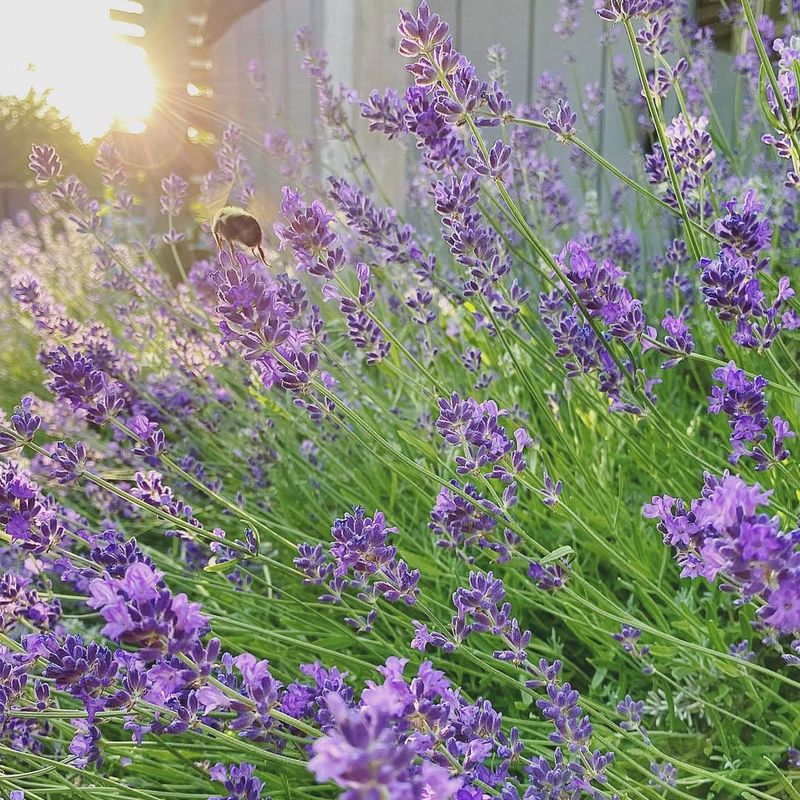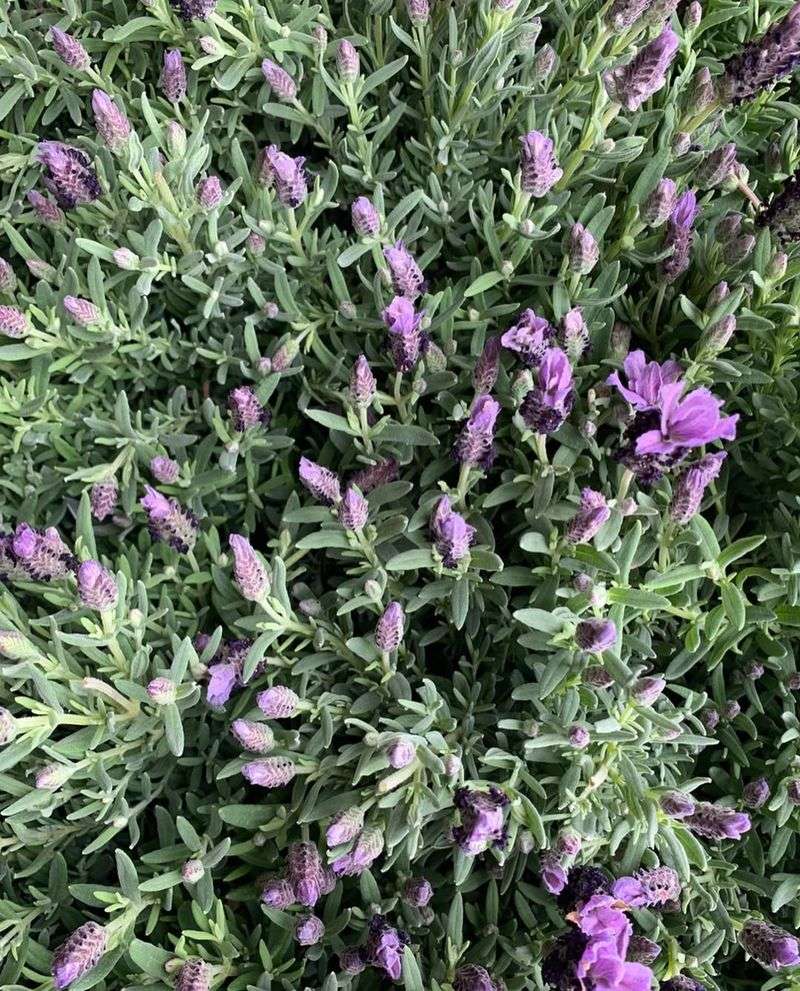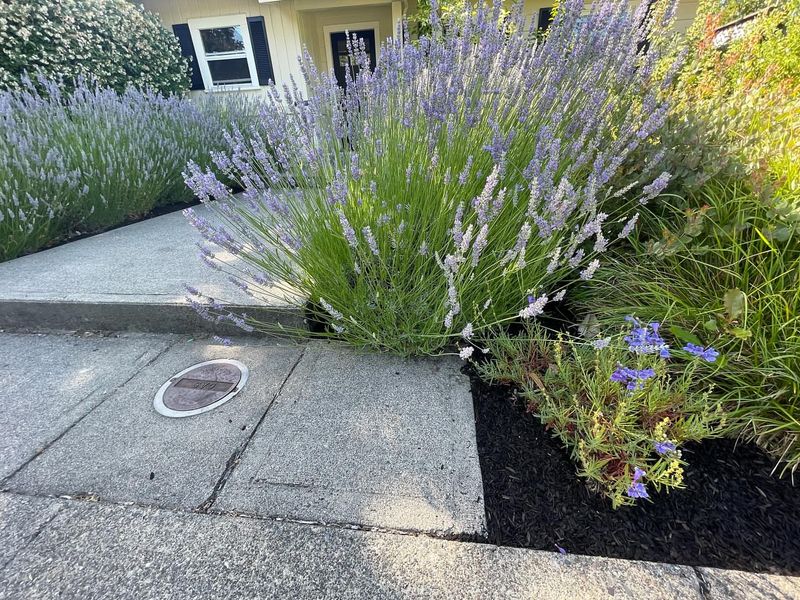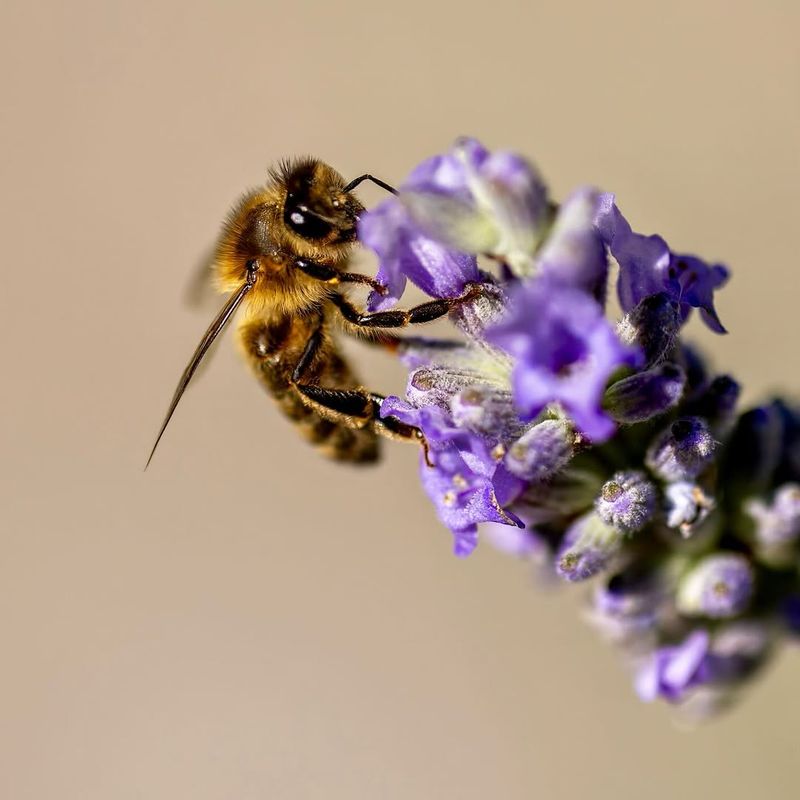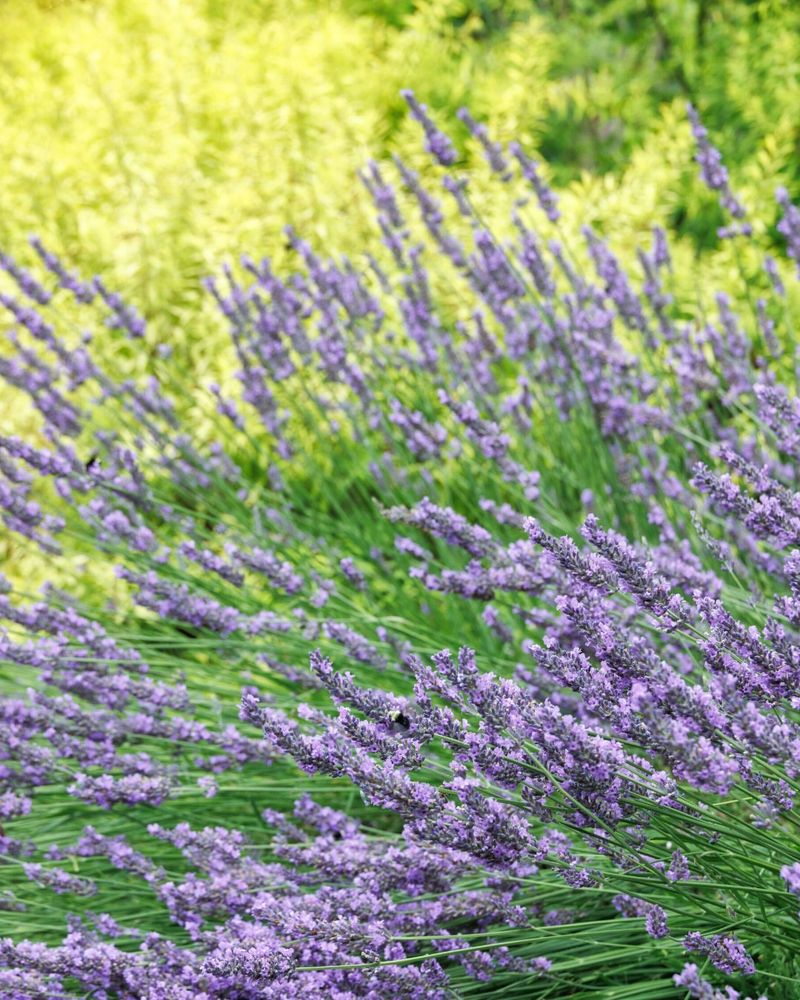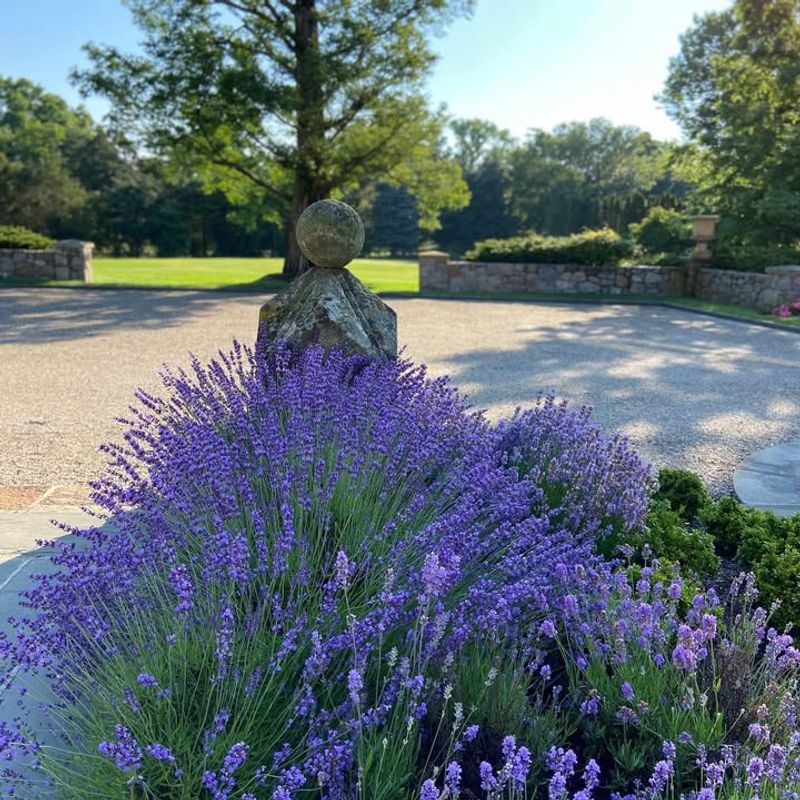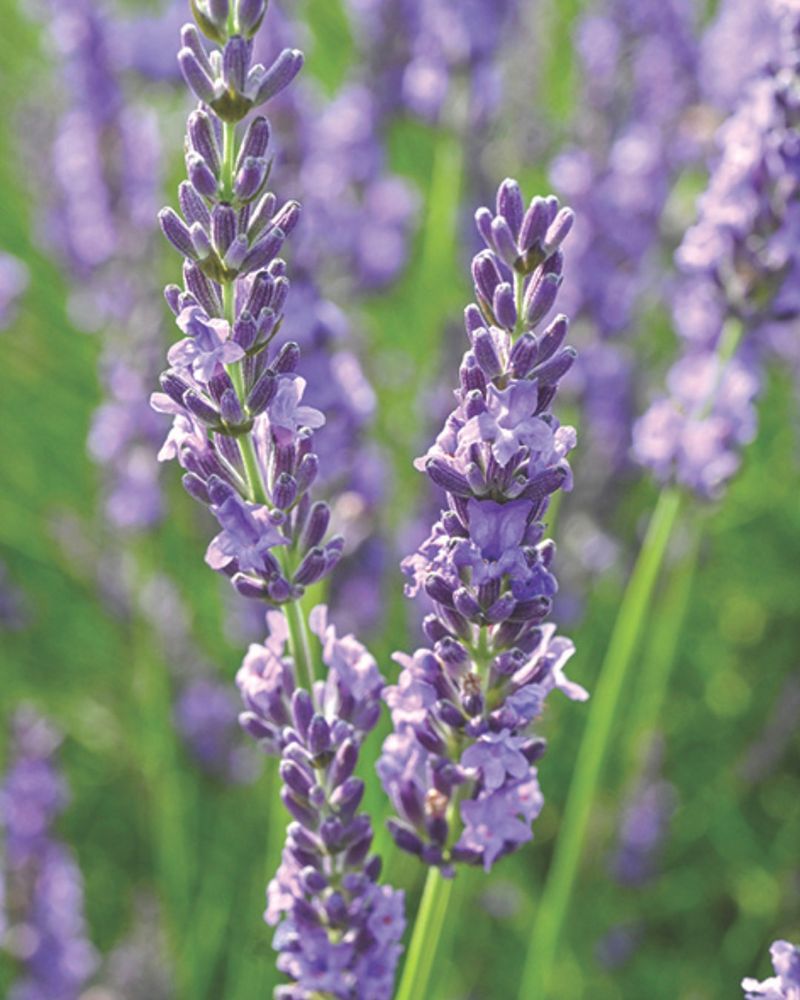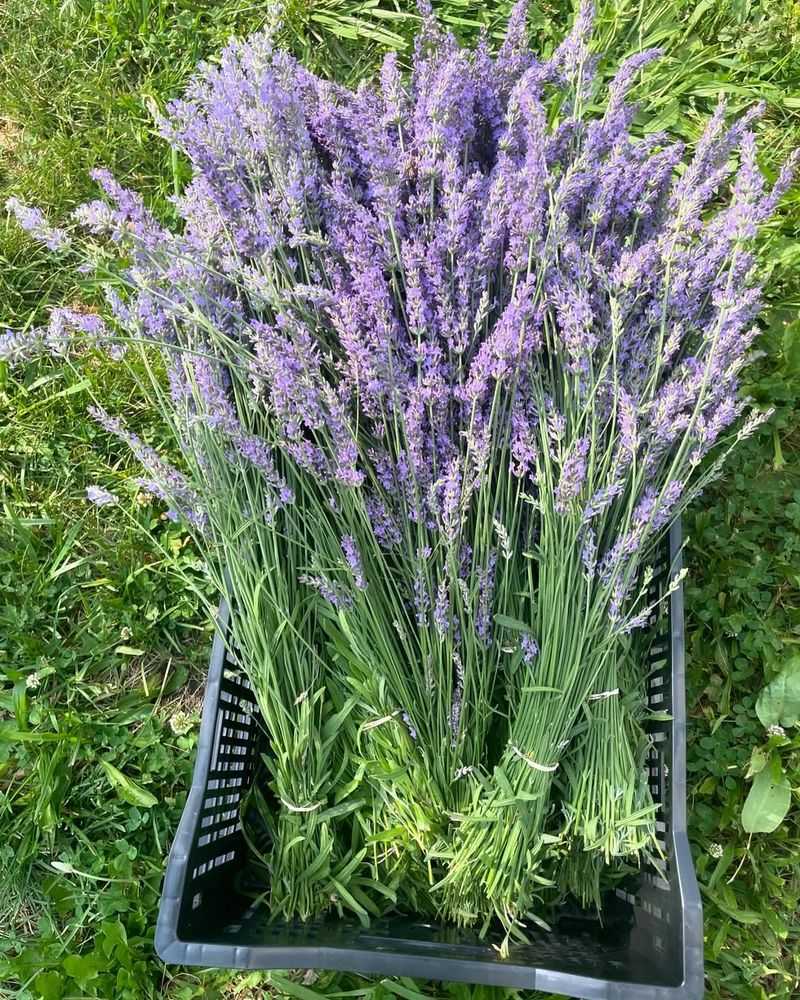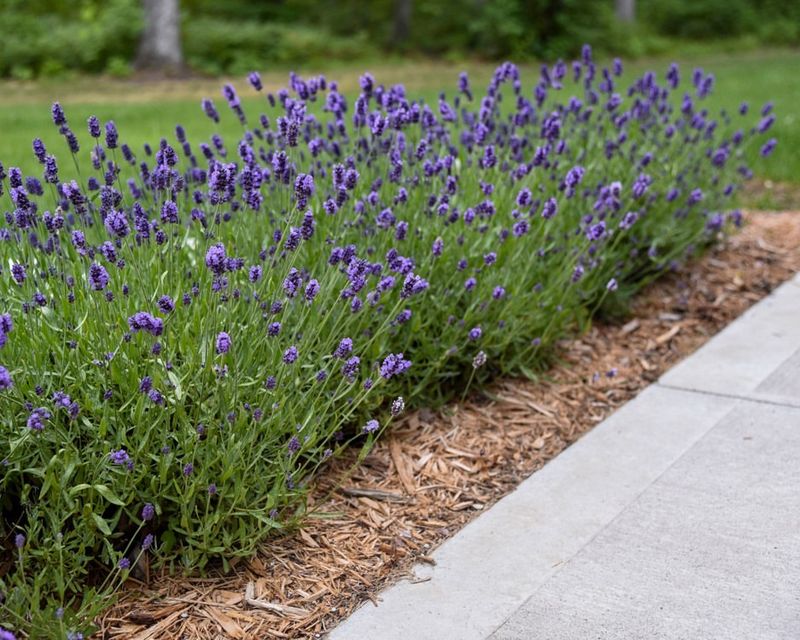Lavender turns Kentucky patios into small slices of calm, and its purple charm packs more punch than most folks expect.
This hardy herb stands tall in heat, shrugs off bugs, and sends a scent that lifts spirits on long summer nights. Each stem offers a hint of country magic, a whisper of wide fields and warm sunsets. Lavender fits the Bluegrass mood, adds class without effort, and proves a simple plant can spark big joy.
1. Thrives In Kentucky’s Climate
Kentucky’s warm summers and mild winters create ideal growing conditions for most lavender varieties. Lavender loves full sun, which the Bluegrass State provides in abundance during the growing season.
Well-drained soil is essential, and Kentucky’s clay-based earth can be amended with sand or gravel to meet lavender’s needs. Once established, these hardy plants handle Kentucky’s occasional drought periods with ease.
Your patio area likely offers the perfect microclimate with reflected heat from pavement and protection from harsh winds.
2. Natural Mosquito Deterrent
Mosquitoes hate the smell of lavender, making it your secret weapon for peaceful patio evenings. The essential oils within lavender leaves and flowers naturally repel these annoying insects without harsh chemicals.
Planting lavender around seating areas creates an invisible barrier that keeps mosquitoes at bay. You can also crush fresh leaves between your fingers and rub them on your skin for extra protection.
Kentucky summers mean mosquito season, so having this beautiful defense system right outside your door makes outdoor dining much more enjoyable.
3. Low Maintenance Requirements
Busy homeowners appreciate that lavender practically takes care of itself once it gets going. Unlike fussy flowers that demand constant attention, lavender prefers being left alone most of the time.
Watering needs are minimal after the first growing season, and fertilizer is rarely necessary in Kentucky’s naturally fertile soil. A quick trim after flowering keeps plants looking neat and encourages bushier growth.
Your main job involves enjoying the view from your patio chair while lavender does its thing without demanding your weekend hours.
4. Attracts Beneficial Pollinators
Butterflies, bees, and hummingbirds flock to lavender like kids to an ice cream truck on a hot day. Watching these creatures visit your patio garden provides free entertainment and helps your entire yard flourish.
Pollinators play crucial roles in maintaining healthy ecosystems and supporting vegetable gardens if you grow food nearby. Lavender blooms from late spring through summer, offering consistent nectar sources when pollinators need them most.
Your patio becomes a front-row seat to nature’s busiest workers going about their important business.
5. Creates Calming Aromatherapy
Science backs up what your nose already knows—lavender’s scent genuinely promotes relaxation and reduces stress levels. Sitting on your patio surrounded by blooming lavender turns ordinary moments into mini spa experiences.
The fragrance intensifies on warm evenings when you’re most likely to be outside unwinding after work or school. Gentle breezes carry the soothing aroma across your outdoor space without any plug-ins or candles required.
Kentucky evenings paired with lavender’s natural perfume create the perfect recipe for melting away the day’s worries and tension.
6. Drought Tolerant Once Established
Kentucky summers can bring dry spells that leave other plants wilting and begging for water. Lavender’s Mediterranean heritage means it actually prefers drier conditions after its roots take hold.
Deep root systems allow mature plants to access moisture far below the surface where other flowers can’t reach. This drought tolerance saves you money on water bills and time spent dragging hoses around.
Your patio plantings continue looking gorgeous even when rainfall becomes scarce, unlike thirsty annuals that demand constant irrigation to survive hot stretches.
7. Beautiful Purple Color Pop
Lavender’s signature purple hues add stunning visual interest that complements virtually any patio design or color scheme. From deep violet to soft lilac, different varieties offer shades to match your outdoor decor preferences.
The silvery-green foliage provides year-round texture even when flowers fade, creating an attractive backdrop for seasonal container plants. Purple blooms pair beautifully with white, yellow, and pink flowers if you want to expand your patio garden.
Your outdoor living space gains instant curb appeal and personality with these eye-catching plants framing the area where you relax and entertain.
8. Deer And Rabbit Resistant
Kentucky homeowners know the frustration of watching wildlife munch through carefully tended gardens overnight. Lavender’s strong scent and flavor keep hungry deer and rabbits searching elsewhere for dinner.
Unlike hostas, tulips, and other deer candy, lavender remains untouched even in areas with heavy wildlife pressure. Rabbits similarly avoid these aromatic plants, preferring tastier options in your neighbor’s yard instead.
Your patio plantings stay intact and beautiful throughout the growing season without needing fencing, netting, or expensive repellent sprays to protect your investment.
9. Versatile Harvest Opportunities
Growing lavender near your patio means fresh cuttings are always within easy reach for countless uses around your home. Dried bundles make wonderful sachets for drawers, closets, and gift-giving throughout the year.
Fresh stems add elegance to summer bouquets, while flowers can be used in baking, crafts, or homemade beauty products. Simply snip what you need without trekking to a distant garden bed.
Your convenient patio location transforms lavender from just another pretty plant into a functional herb that earns its spot through multiple practical applications.
10. Year-Round Evergreen Structure
Unlike perennials that disappear completely in winter, lavender’s woody stems and foliage provide visual interest during Kentucky’s colder months. The silvery leaves catch frost beautifully and add texture when most gardens look bare and lifeless.
Evergreen structure means your patio doesn’t feel surrounded by empty dirt from November through March. Strategic placement creates natural dividers and borders that define your outdoor space regardless of season.
Your year-round landscape maintains definition and character even when snow covers the ground and other plants have retreated underground until spring.


